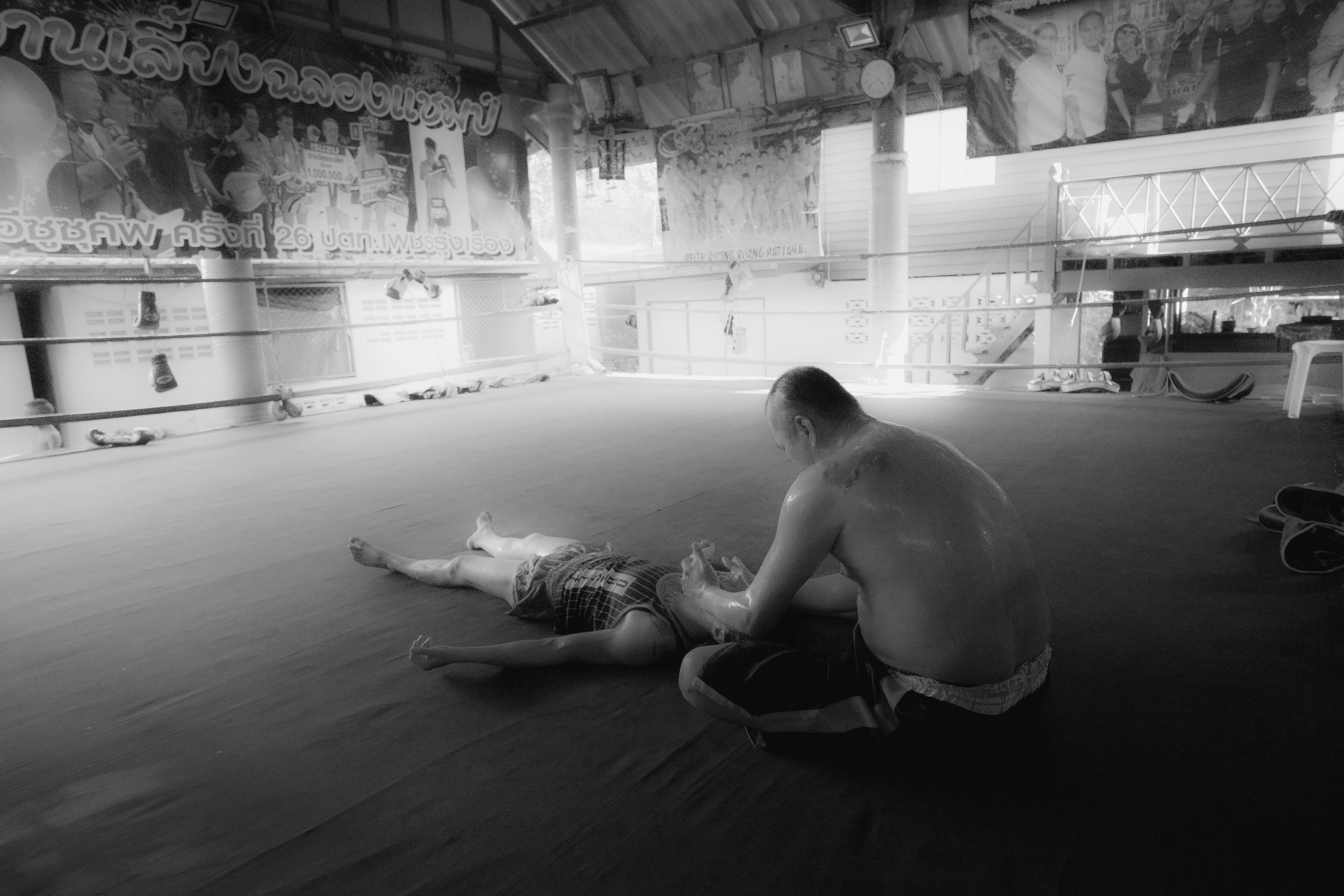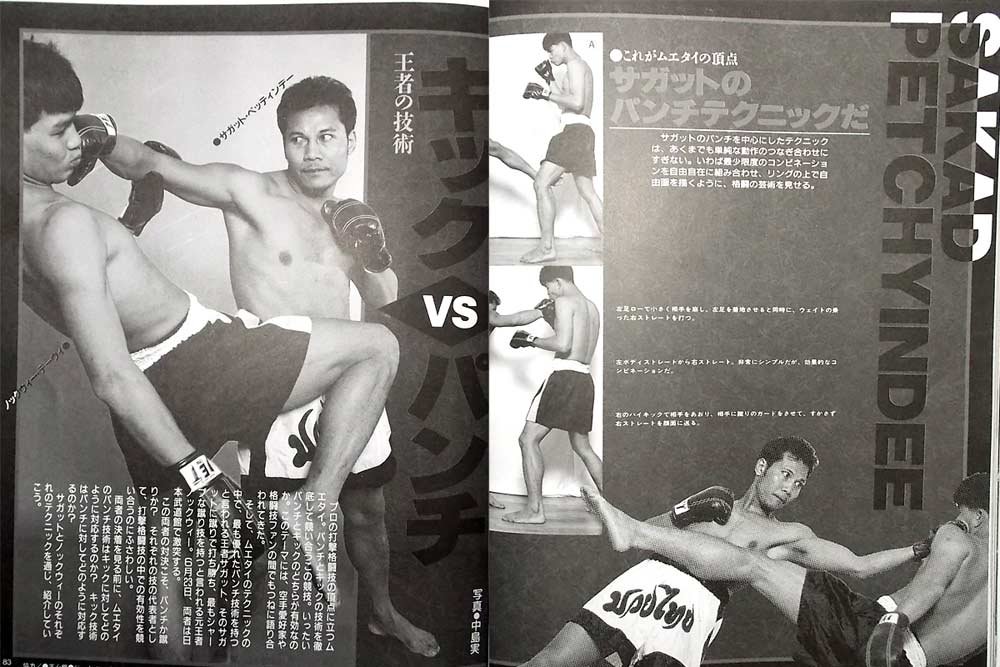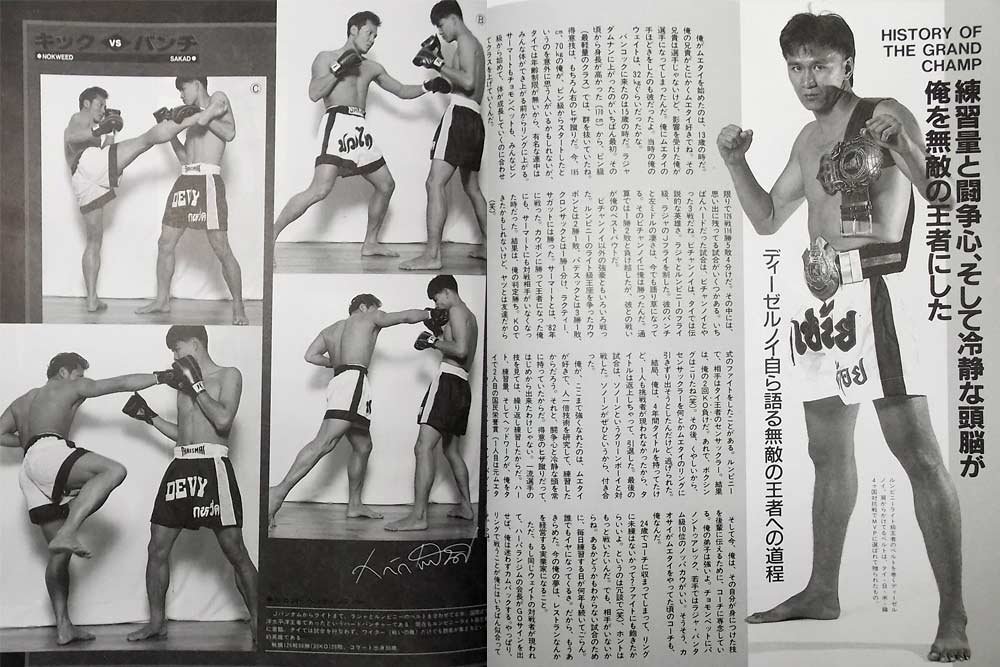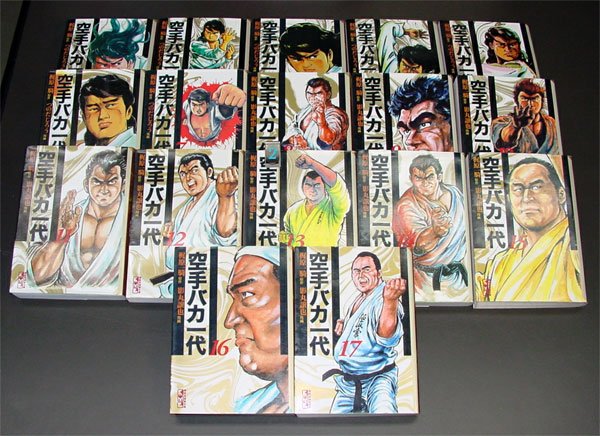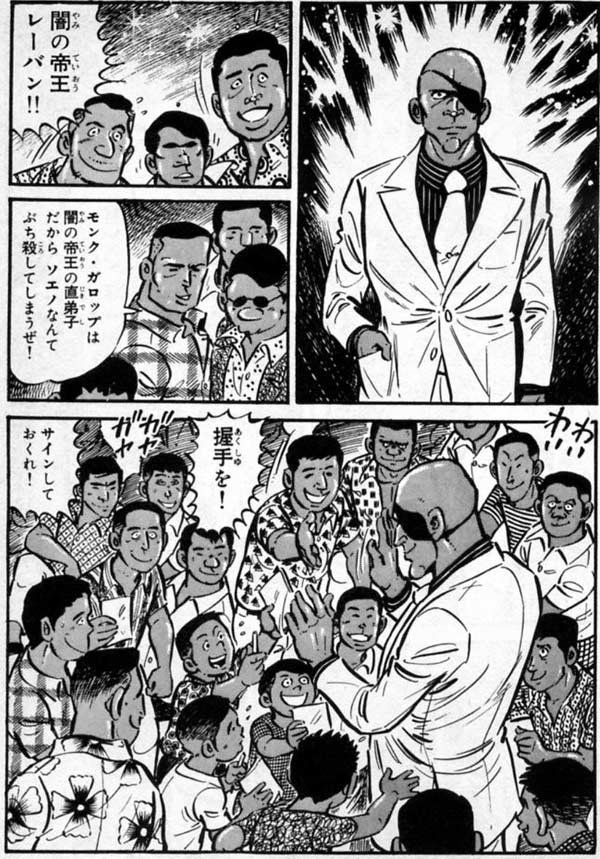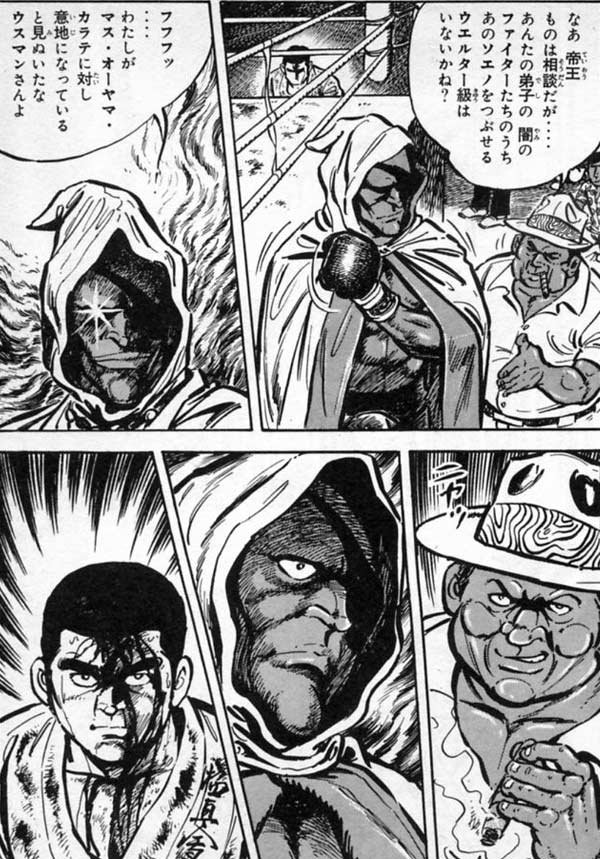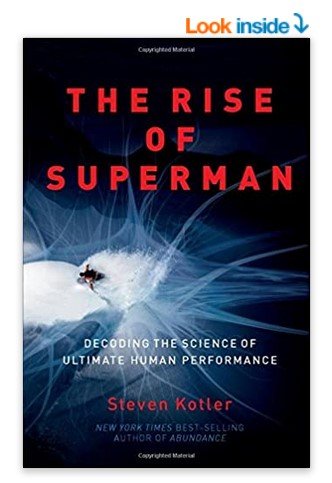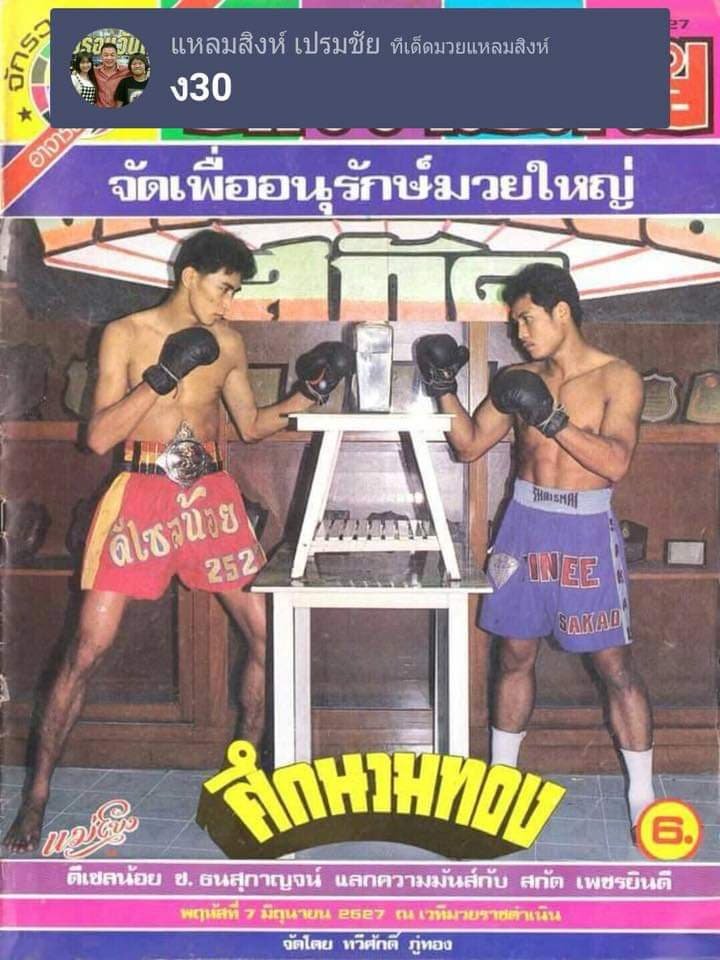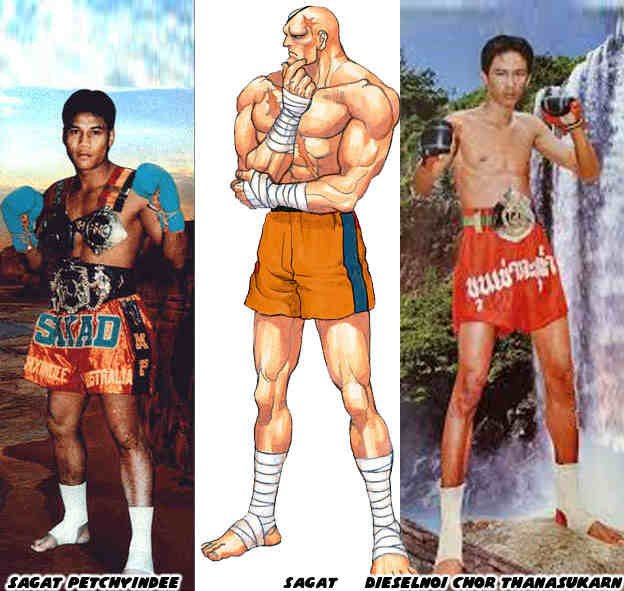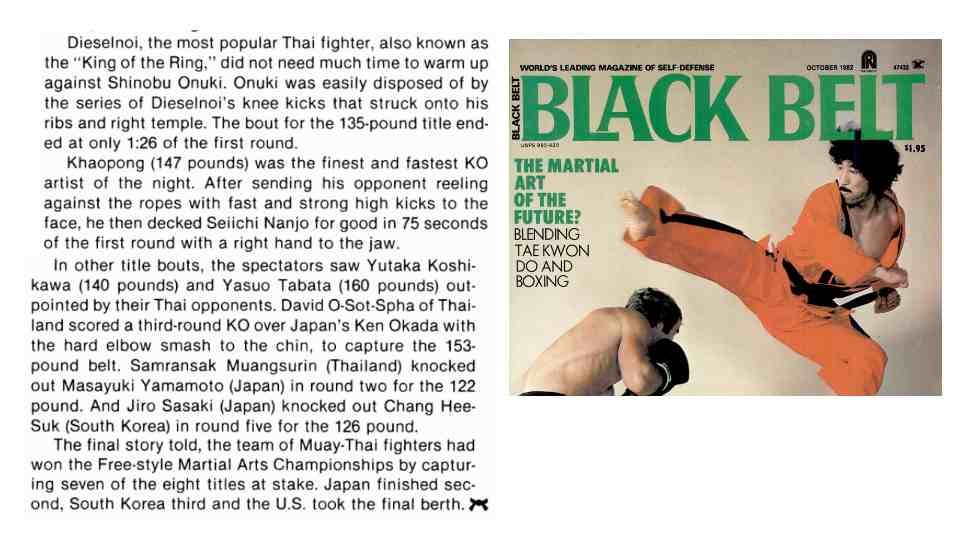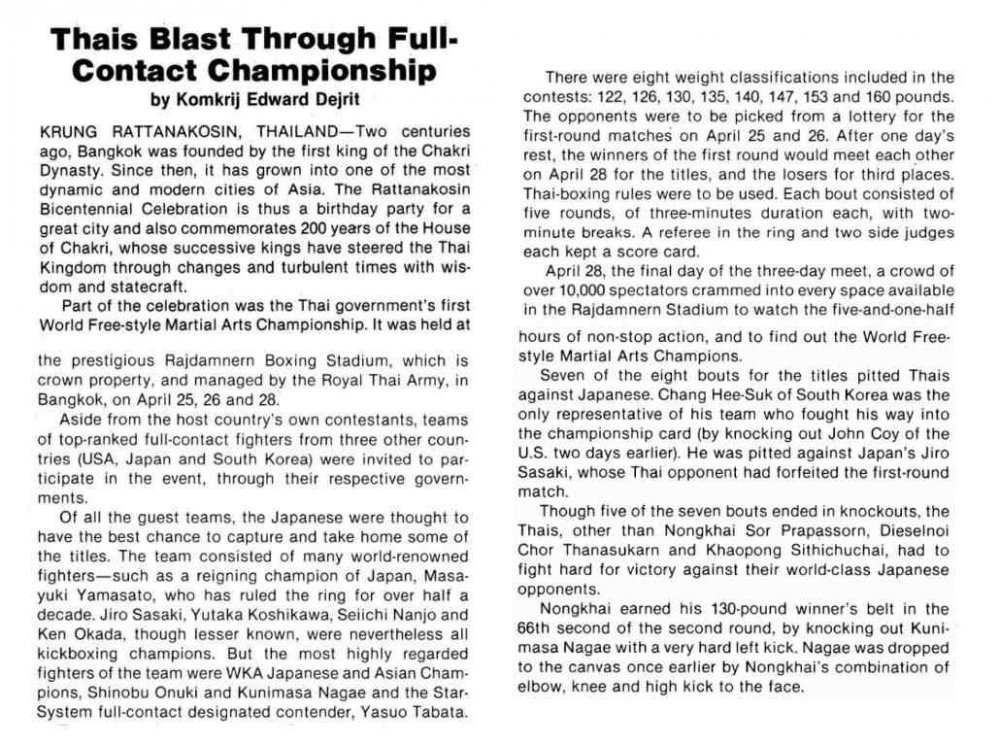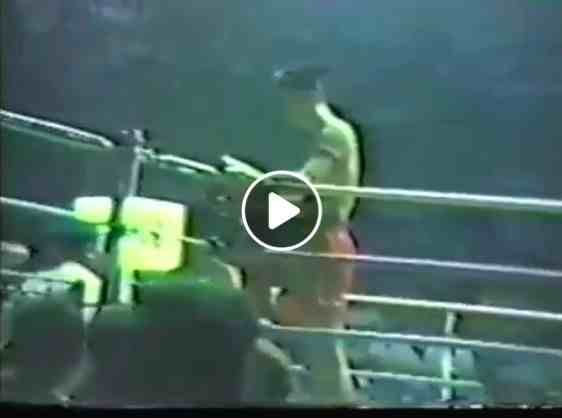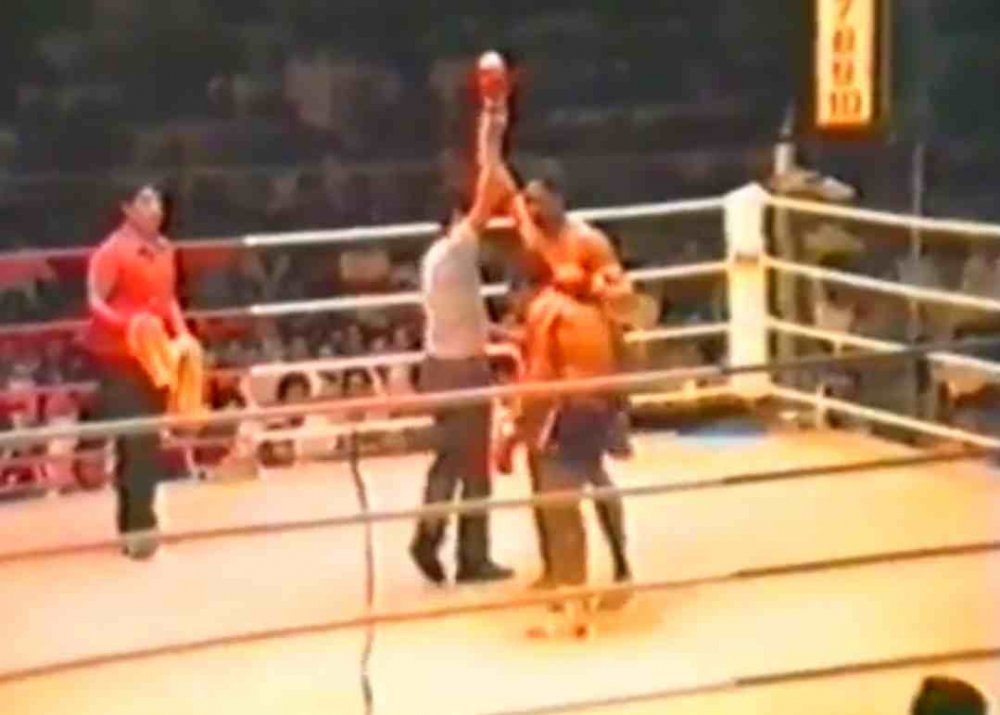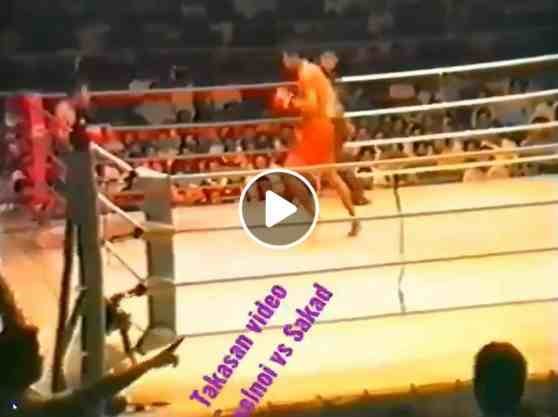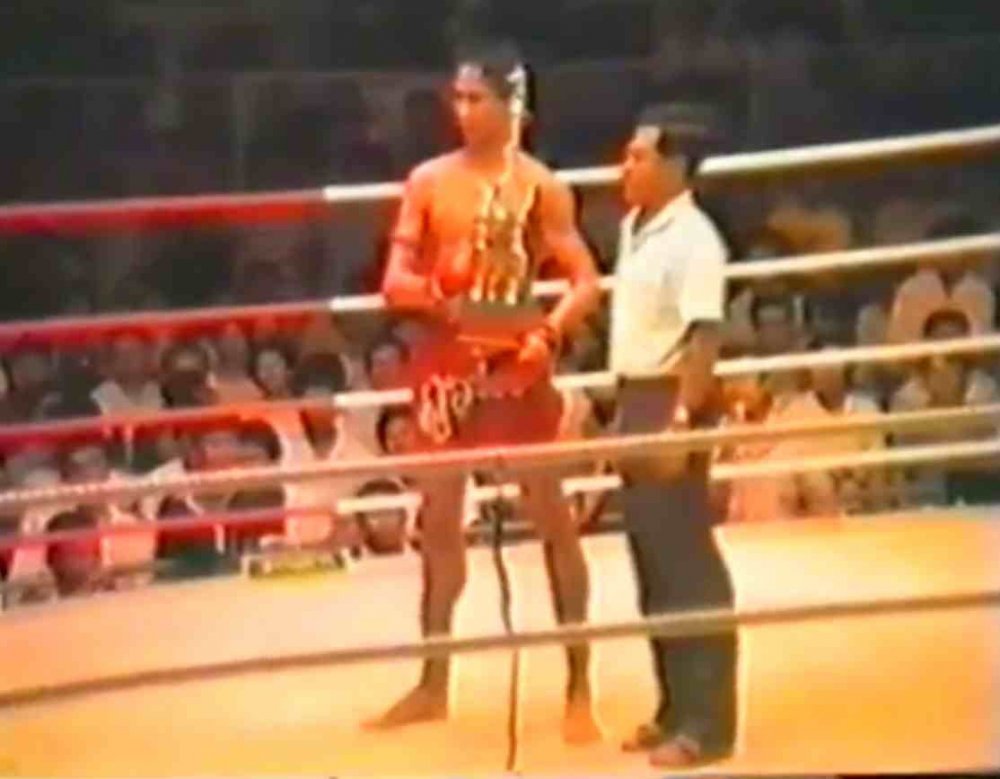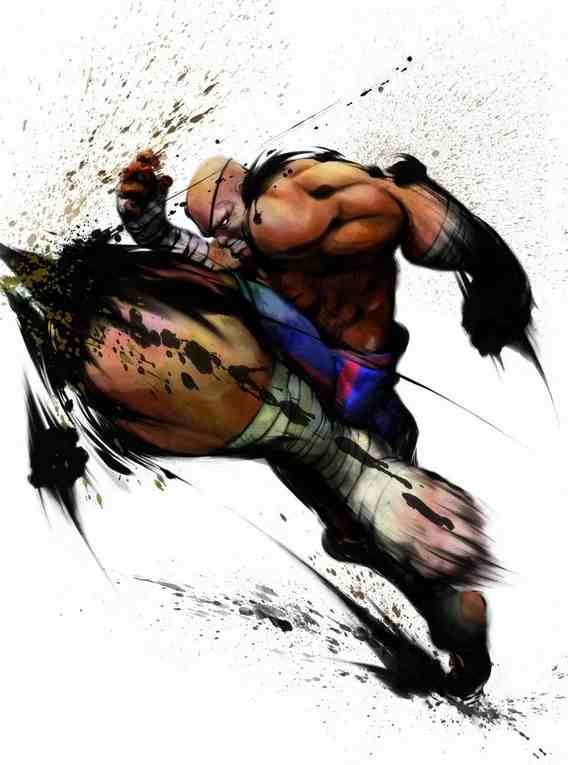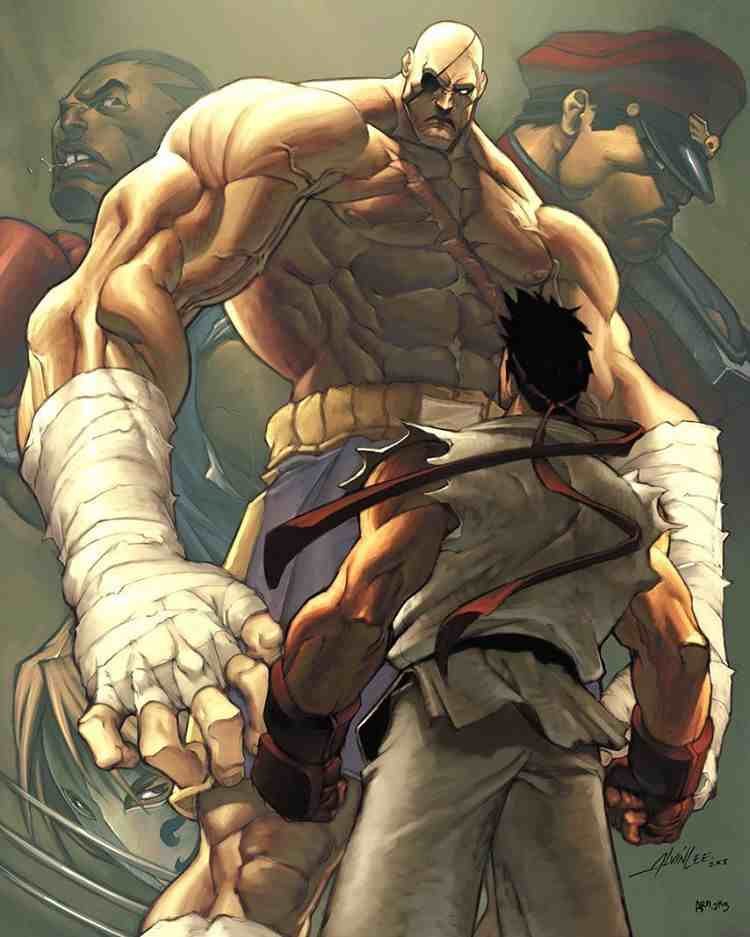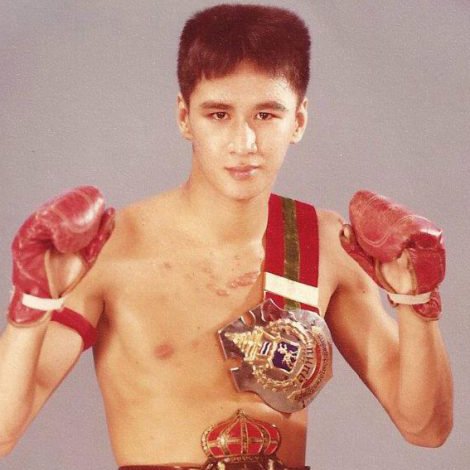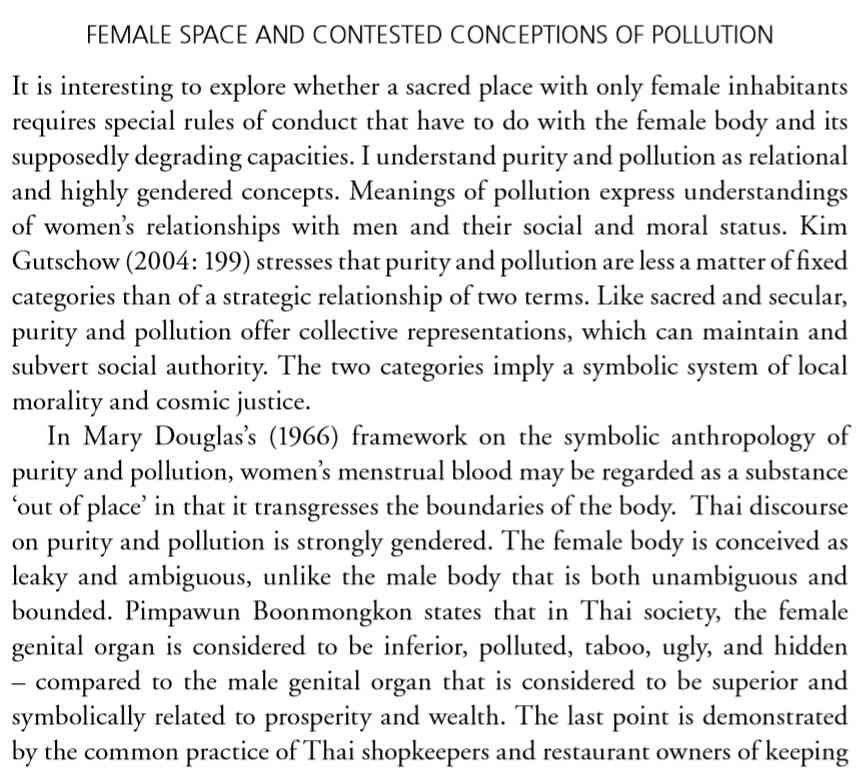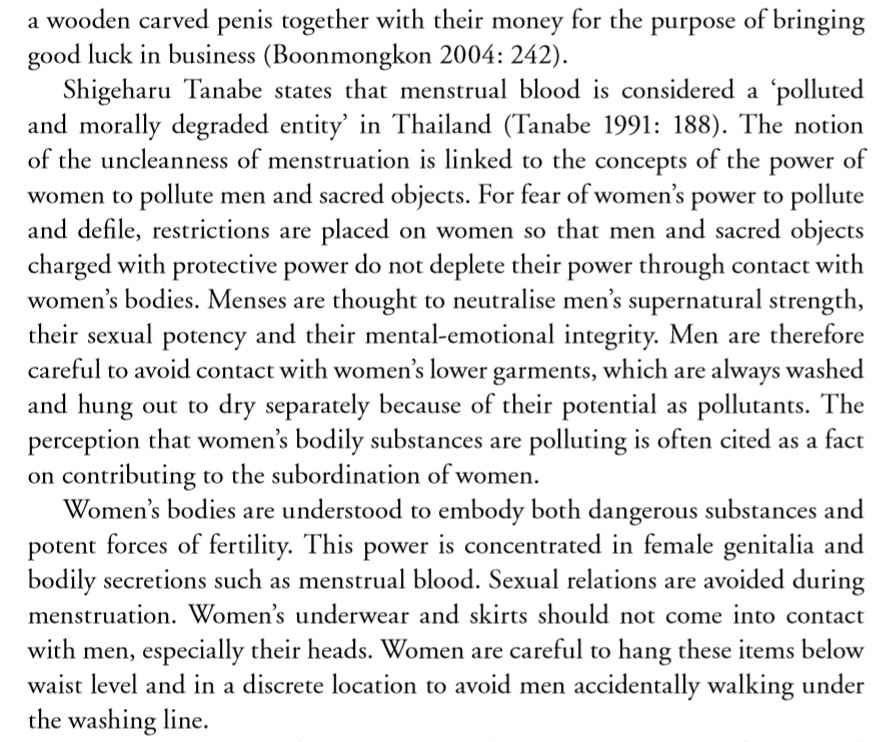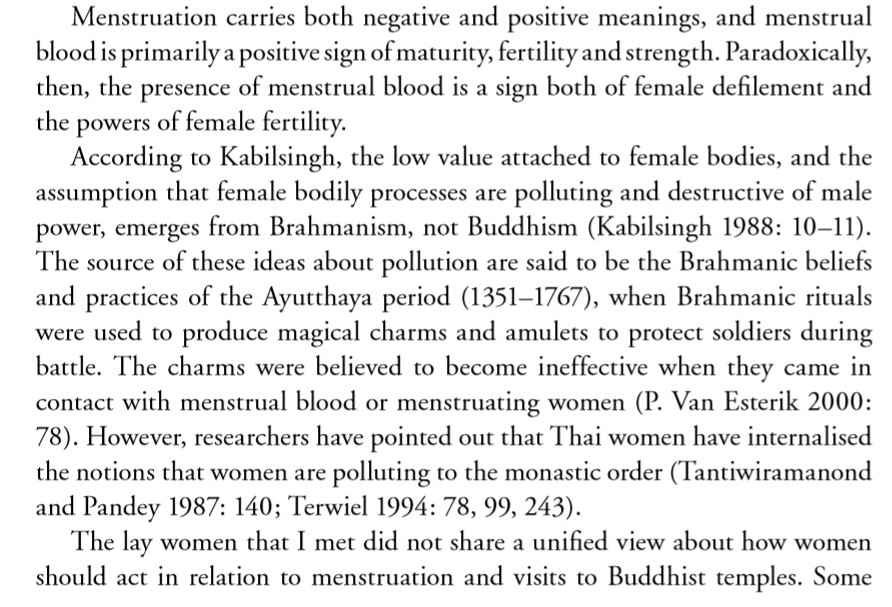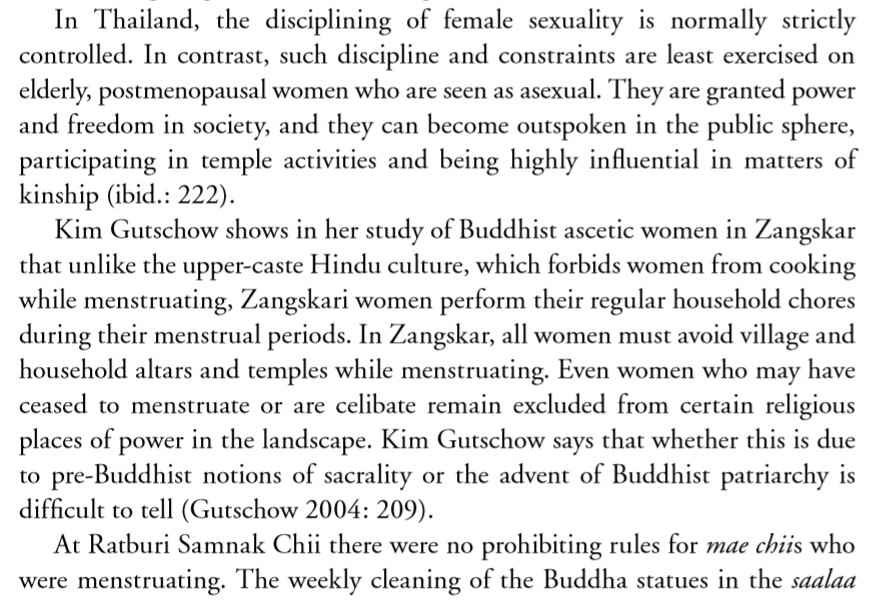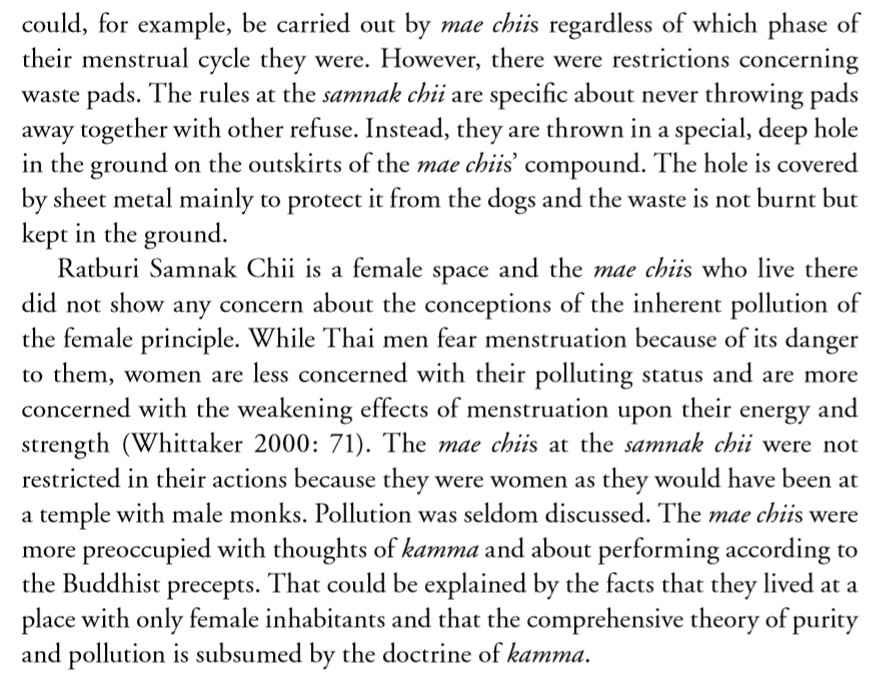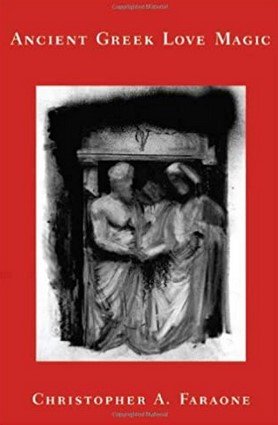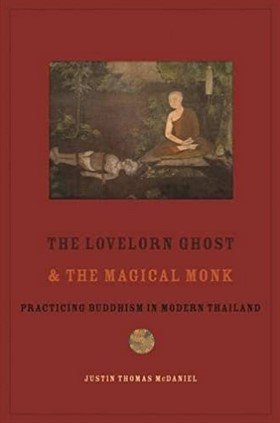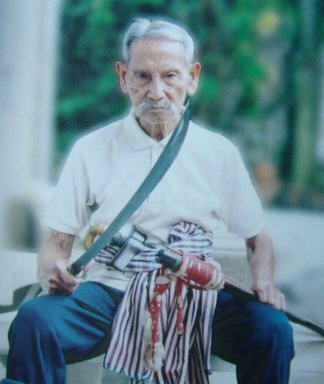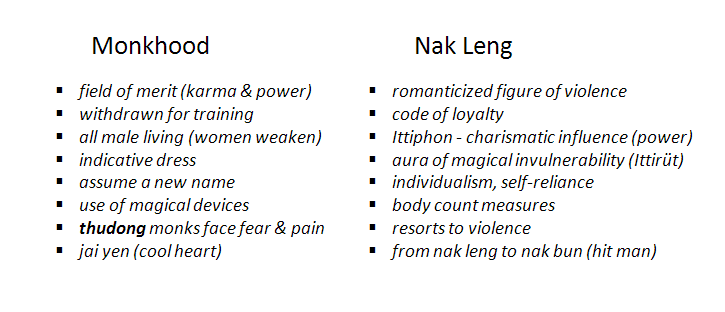-
Posts
2,264 -
Joined
-
Days Won
499
Everything posted by Kevin von Duuglas-Ittu
-
Going to thailand for 3 months
Kevin von Duuglas-Ittu replied to Nadiyaz's topic in Gym Advice and Experiences
I don't know about your gym and travel choices, but you should not budget in money you expect to earn fighting. In terms of budgeting I would consider any money you might earn from fighting as bonus.- 17 replies
-
- chiang mai
- thailand
-
(and 1 more)
Tagged with:
-
The Intensive videos are here: Patrons get a discount, though 100% of the net profit during the covid crisis goes to the legends in the series, Karuhat and Yodkhunpon: As a patron, depending on your tier you can be eligible for discounts on these purchases. $5 patrons get 15% (link: https://www.patreon.com/posts/17837199 ) of these purchases, and $15 patrons get 50% (link: https://www.patreon.com/posts/17837342 ) of of these purchases. The intensive series is supported by patrons.
-
Of course these can be used as a training tool, perhaps an ideal training tool. One of the problems of training in a single gym is that you can be exposed to a pretty narrow set of techniques (whatever a coach knows). What the Library does is show how much high level technical variety there is, and many of the reasons why. These are real sessions of instruction, many by legends. But...how you use that tool is really what matters. Do you seek out styles and techniques that appeal to you? How do you bring them into your own training. That's a question of your own creativity. But this is really going to the source. The Sylvie Intensive videos are more indepth, and probably something to explore after you are acquainted with the Library, I would say.
-
Here's a lot more, written in Thai (which I don't read, but I'll probably Google translate and bug Sylvie about), about the Reiban "Karate Master" connection, with Japanese language shots of Sagat Petchyindee and Dieselnoi (the publication of which, I believe, some of which of this kind preceded the release of the game), and cells from the Karate Master manga which show Reiban to be very tall indeed, some of the images reproduced below: It's quite interesting, for our theory, that in this manual above you have Sagat and Dieselnoi sitting on opposite pages - the author uses this photo to support the possible influence of Sagat Petchyindee on the character, but does not seem to be aware of their fight history, or consider the impact Dieselnoi may have had on the Japanese fight imagination up to that point.
-
This is not an original observation on my part, but I definitely have been thinking about it and weighing the possibility for some time, gathering evidence. The first time I read the suggestion was in this blog post from 2015, which points out that that in Street Fighter II "Sagat" was much lankier; unfortunately though the author perpetuated the false history that Sagat had beaten Dieselnoi which he takes as a knock against his own suggestion: A graphic from the blog post:
-
Was the World Free-Style Martial Arts Championships held in Bangkok in 1982 the Premise for Street Fighter Itself? A bit of further evidence for the looming presence of Dieselnoi as absolutely unbeatable in the Japanese mind was his performance at the World Free-Style Martial Arts Championships held in Bangkok in 1982, 8 months before Dieselnoi would beat Samart. The Japanese brought a huge contingent of fighters set on proving that they could hang with the Thais. All of the Japanese fighters were beaten, and some were blown out by the Thais (except for one who won because the Thai was disqualified for clowning him). Dieselnoi took only a minute and a half to destroy his Japanese counterpart in the final. Dieselnoi giggled to us, recounting that he cut his knee on his opponent's tooth, showing us the scar that remains to this day. While other prominent Thais participated and prevailed, like Nongkai, I'm sure none of them made the immense impression that Dieselnoi made. The report from Black Belt magazine: Dieselnoi Just Ragdolling An Opponent at the Event If you want to see what kind of stories came back to Japan from this event, two and half years before Dieselnoi would dispatch with Sagat, it wasn't just the 1:30 1st round obliteration of the Japanese fighter in the championship round. It was likely these kinds of matchups against international competition in earlier rounds. Here is faces a TKD fighter at the championships: watch it here You can see where seeds of the mythic proportions of a giant fighter from Thailand must have been planted in the Japanese martial arts community. If there was a nightmare boogieman figure of the unbeatable fighter from Thailand, it wasn't Sagat Petchyindee, it was Dieselnoi. This was Sagat-like. Both Dieselnoi and "Sagat" Lorded Over an International "World Championship: Note, in the first version of Street Fighter the World Championship "Sagat" is hosting (The World Fighting Championship[1] (ワールドバトルトーナメント Wārudo Batoru Tōnamento?, "World Battle Tournament") to prove his greatness, is very much like the one that Dieselnoi dominated in 1982. Sagat Petchyindee was not a part of that Championship. It may not be a stretch to imagine that the entire physical premise of Street Fighter engagements was inspired by that 1982 World Championships in Bangkok. Black Belt magazine some years later would over-dramatically remember this championship as "...the meanest, no-holds-barred tournament in the Far East". "Sagat" is the "Emperor of Muay Thai". As the Black Belt Magazine article tells us, at the time of the event Dieselnoi was known as the "King of the Ring".
-
The Fight That Inspired the "Sagat" Character? There is a new series of clips put out by a Japanese collector from the 2nd fight between Diesenoi and Sagat. I will say, this edit was very kind to Sagat, it was a fight that in late rounds he was significantly frustrated and defeated, honestly looking like he was losing heart at one point. Instead, in this clip you see the dynamic clashes. You can watch the new clips here: watch the clip here Who Inspired "Sagat"? The surfacing of the video brings up "eyeball evidence" of the very real likelihood that the actual presiding inspiration for the Sagat Street Fighter character was not essentially Sagat himself - who very obviously was borrowed from (his name), and some aspects of his likeness possibly copied - but rather was perhaps Dieselnoi who won the fight going away. You can see from this photo who was the towering unbeatable fighter between them: The Sagat character is 7'5" (226 cm). Dieselnoi above, upon defeating the heavier fighter Sagat for the 2nd time in a handful of months, was cementing his position as possibly the most unbeatable fighter of all time. It is he who is the towering giant. What I suspect is that Dieselnoi's absolute dominance over Sagat, his relentless, unbeatable style, was fused together with the likeness and proud, prowling nature of Sagat Petchyindee, to make a Muay Thai Frankenstein of parts of greatness. Because the videos of those fights have been lost to us (as well as the video of Dieselnoi beating the legendary Samart, a few years earlier - luckily refound, watch it here with Dieselnoi's commentary) , we, separated by decades, have lost just how incredibly imposing Dieselnoi actually was. He literally ran out opponents in his prime of fighting. We all knew that, but until you see it, you can't know it. Now, it's very clear that the Sagat character is based on Sagat Petchyindee in numerous obvious ways, and it has been painful for Sagat to have never received remuneration for the use of his likeness. And it is also clear that the character possesses fight qualities of Sagat, including his penchant for the uppercut. But, I would suggest, the very spirit of Sagat as a towering unbeatable Thai fighter was in significant part taken from the actual towering unbeatable Thai fighter, and probably even from these two Sagat fights, or this single fight, where Dieselnoi claimed the throne, dominantly. It wasn't a close fight. The Japanese legend of Sagat the fighter was also likely derived from this fight of his in Japan, facing Raktae where Raktae plays the part of a punching bag in what borders on looking like a showfight. Further evidence of Dieselnoi's inspiration? Was this a design clue left behind by the creator of Sagat, giving him a characteristic scar on his chest? Dieselnoi also has a distinctive keloid scar that can be seen in all the photos of him in his prime. Hmmmm. We also have to remember, aside from the Tiger Uppercut, Sagat possessed the Tiger Knee. True, more a flying knee like the one appreciated and borrowed from Muay Thai by high profile Japanese kickboxers. But yes, Sagat possessed devastating knees, perhaps another nod to Dieselnoi. All this is to say that when contemplating the impact on combat sports, because of the lack of fight video Dieselnoi's immense imprint has been significantly lost or diluted. The possible origin of at least part of the Sagat Street Fighter character in Diesenoi stemming from these fights where the two faced off actually got Sagat - who is a beautiful and wonderful fabulist and tale spinner - to state in a much read interview that he had actually beaten Dieselnoi two times out of three (instead of losing to him two times out of two) - that interview has recently been corrected, it was no fault of their own, they were only reporting what was said. It was only when directly asking both Dieselnoi and Sagat ourselves, what the record between them was did we confirm that it was 2-0 for Dieselnoi. In Dieselnoi's laughing response "He talks a lot of shit, he never beat me". Unfortunately all over the English speaking internet, in countless articles like this one, including Sagat's present Wikipedia page, is the claim that he had beaten the incredible Diesenoi twice, almost as proof of his own Sagat-ness. It might be like Joe Frazier stating in a foreign language interview that he beat Muhammad Ali all three times they fought, in their famous trilogy. People in Thailand of course knew the results of these fights, they were famous. But in the English speaking West, to show how far we are removed from actual Muay Thai history, we readily took in this re-write of history, as not only true, but also evidence of Sagat's greatness. We have the great irony through the absence of video record, that for decades Samart became proclaimed the unquestionable GOAT, and Sagat proclaimed the "Sagat" of video game prowess, despite Dieselnoi actually proving his dominance over both fighters in otherwise unseen fights. Because we could not see how dominant Dieselnoi was, the lack of video helped us imagine that it was only size that beat Samart - it wasn't - and to accept the false memory that Sagat had bested Dieselnoi. I love Sagat. He is a spectacular and marvelous man and fighter, deserving of remembrance and celebration. Every time we see him its a joy. But somewhere along the way we lost the incredible dominance of Dieselnoi, a loss that probably reflects itself on the effacement of his likely strong inspiration for some of the most stand out qualities of Street Fighter's "Sagat". He is a kind of the "inner" Sagat. Unfortunately the full video of Dieselnoi vs Sagat has not been released by collectors. But there is great hope that with the release of these new clips one day the world will see the video of the fight that likely helped give birth the "Sagat" character of Street Fighter, where game maker combined all that was terrifying in both of these fighters. Perhaps it would be fair to take the working hypothesis that as the video of Dieselnoi's victory over Sagat permeated Japan in 1985 and 1986, Takashi Nishiyama created a character that brought the two together, which debuted in 1987. It's as if Mike Tyson had famously faced off against an incredible tall, relentless unbeatable fighter, and lost definitively. What if Mike Tyson was the same size and as impervious as this towering foe? Yes, he would look something like Mike Tyson, but he would be something much more. The spirit would be of the unbeatable tower. Because for so long the fight itself has been lost, all we had was the evidence of physical resemblance, and a name passed on. What has been at stake though is the legacy of the most unbeatable Muay Thai fighter in Thailand's history. How he will be remembered for generations to come. You can see Dieselnoi watch his fight vs the presumed GOAT Samart here, a year and a half before the Sagat showdown:
-
What I'm interested in, perhaps, is how the mood of a technical aesthetic can be capture and intensified by photography, and then possibly feedback and inform the development of the technique itself. Just as the role of play, or impersonation of a fighter can help us embody the technique in a higher, more affectively deep way. As photography is able to focus those aesthetic rays, in a sculpting way, I wonder if it can open up a technique to more of what it can truly be.
-
Namphon is my favorite (underrated) fighter. I just love him and his dignity. Known for his relentless fighting, getting cut a ton, it seems like he was on the short end of some decisions that maybe were reputation decisions, a lack of respect for his game. He owned Dekkers in their first fight, but was given the loss. In one of his fights against Samart it seems he just couldn't climb out of the "he's just a knee fighter" rep, as Samart dangle-armed his way to victory. This fight is one of my favorites of his. He fights the entire fight backwards, from the bell, vs the bigger, more powerful punching Orono. He out-femeu'd him, made him chase and chase. And in the 4th unleased beautiful, overwhelming boxing. But that doesn't mean it wasn't an exciting fight. Orono keeps on coming, building more and more momentum to a possible decision win. So much good stuff in this fight. Lots of windshield wiper frame offs, long guard shocks to take the pace of the powerful southpaw's punches.
-
In reading "Making Fields of Merit", a study of the Maechi (female nuns in Thailand) I came across one of the more concise summaries that outlines the issue of female pollution beliefs, of which have bearing on the traditions that bar women from sacred spaces, boxing rings, and the custom of having women pass under the bottom rope. It's good to have it laid out in one place.
-
If anyone wants to dive into my thinking on how to view the logic of possibilities of gender in female fighting, this is my essay to read, written 12 years ago: Wasps, Orchids, Beetles and Crickets: A Menagerie of Change in Transgender Identification This lays out the full Deleuzian, Guattarian, Wittgensteinian philosophical argument of why we are vastly underrating what is possible through female fighting projects and careers in Muay Thai. To be clear, Muay Thai is not the subject of the essay in any way, but the underlying argument and analysis is directly applicable to Muay Thai and gender. In short, if the analogy is not apparent, when female fighters - perhaps especially western female fighters, but also some Thai female fighters - take on the "clothes" of Thai hypermasculine performativity, this is necessarily the forming of a trans-gender assemblage. What is possible in these kinds of assemblages is infinite, and not reduceable to masculine or feminine essentialities. The most important - and potent - passage in perhaps all of Deleuze and Guattari's writing (cited in that essay linked above) is this, along with my explication: For, the body of a racehorse goes beyond our classifications of kinds—though these too demarcate the kinds of experiences a racehorse can have, for instance the experience of mating with a workhorse. A racehorse will likely experience things in a manner no workhorse will come to, while the ox and workhorse will have a community of affects historically determined across species. The body without organs is this veritable capacity to be defined through intensities experienced in particular ways; and from these intensities be able to disorganize from one’s history (deterritorialize), and reorganize in a line of flight, “jumping the tracks” of code so to speak, into new possibilities of material assemblage (reterritorializing), just as the orchid becomes an orchid-wasp. By extension, it invites us to see that, depending on how you slice the frame of reference, a serious western female fighter, and a serious Thai male fighter could arguably have more in common, than an imagined cosmopolitan Thai business man (who will never see the practice ring) and that same serious Thai male fighter. The workhorse and the ox. Gender, or any single taxonomy, is not the final frame of reference, and much more interesting things happen and are possible when we look to the specific assemblages being formed. The oxen very well could play an important part in the preservation of the most important values to be found in the art of work horses. Racehorses on the other hand may not. The ultimate analytical questions are: What is the affective capacity of intensive parts, and what are the comparable relations of extensive parts?
-
Let me quote the full paragraph, highlighting what I felt were the operative concepts and phrases of what you are saying. This was just my take on it. I see a lot of categorical thinking here, metaphysical claims, that seem to overtly exclude the possibility that this is just historically contingent patriarchy. I'm not sure at all how this can be read otherwise. This will "always" be the case, and women will "always" have this status, not because of the opinions of people, but because that this is essential. Also, please, just keep in mind that we had come to an agreement of what the values Odyssean and Achillean mean. You took these from my writings, I should have a sense of what they imply. Achillean is much preferred. Odyssean is really a kind of fallen state, at least by my original framework. So when you say: "...because of the odyssean ''foot halfway out the door'' of motherhood that is always latent to female fighters" you realize that you are also describing my wife, who is a female fighter of intense commitment, right? You seem to be arguing that she, and women like her, will always have the latent (and justified) position of being "halfway out the door" because of their ability to bear children. Given that we just had agreed Achilles > Odysseus, in what way should this not be considered a slight of her (and all other serious fighters?). If you scroll up to the top of this post and read the original study "Making Fields of Merit" attached and cited, very similar debates such as these surround the issue of whether seriously dedicated women should be able to ordain into monkhood (while only perfunctorily dedicated men regularly are). This is not me being sentimental about my wife. This is the very subject of this post. Scholars cited in that study debate about whether women are essentially "more attached to the world" due to the possibility of motherhood, and therefore essentially cannot take the same spiritual place that men can in the detachment commitment of Buddhism. It's a strongly analogical argument to the same one you seem to be presenting. I understand that arguing Philosophy is in its way its own world. It's the play of concepts, ideas, intuitions. But if Philosophy is to have importance, its because it impacts the Real. This is why I spooled out the kinds of conclusions that come from the positions you seem to be putting forth. It concludes with real, specific women, being barred from both recognition and opportunity, and other real specific men, being given the same, in a very asymmetrical way. Historically, this is done through these kinds of "eternal" "natural" appeals of that's just the way it is, and will always be, often with women finding themselves inherently, or latently, on the outside.
-
These two statements conflict. You can maybe see why it has lead to confusion. I felt you very clearly put your observations into the non-historically contingent category. Almost all sociological aversion is historically contingent. You seemed to very clearly preface your "halfway out the door" comments with an appeal to eternal things. You seemed to be claiming not a personal belief, I agree, but really an appeal some kind of ultimate reality, which will "always" be the case (not dependent on history). You seemed to be arguing that no matter how history proceeds, these eternal things about women would ground sociological aversion. In other words, it would seem to be argued that such aversion was permanently justified. That's what I have some quarrel with.
-
I let this slide by, but in sitting with me it kept tugging. I'm going to point out something that I think is important. You - I'm going to assume that you are male - are positing really a nearly ontological priority of your own theoretical home in the fighting ring, which would read as more real, more committed, than let's say, that of Sylvie, who has fought in the ring over 260 times. I'm going to assume as well that you have never been in the ring, or at least you have never been in the ring nearly as much as Sylvie, but you position Sylvie, who has been in the ring more than any westerner in history in Thailand, as categoricallly "halfway out the door" (Odyssean), apriori, when compared to you (or any other male) who very likely never have even put your foot IN the door. I don't mean to be rude about this pf course, and yes, maybe you have 100 fights under your belt, and you have put your foot in the ring quite a number of times, but...odds are, not. This really goes to the original subject of this post. That actual lived experiences of human beings are discounted and pre-framed, just along the justified lines of gender. Just as Thai Maechi, who devoted their lives to spiritual development, are put on a lower scale than even men who become monks, symbolically, for only a few weeks, female fighters who have actually put their lives (yes, lives, women have died through the ring) and their social capital on the line, under real violence (Sylvie has taken 211 stitches to the head), are discounted, under some strange logic of the biological capacity to carry a child. Rather than this capacity being something to their super-credit, instead it is to discount them, fighters categorically "half-way out the door". You duplicate the very contradiction which originated this post. I know you don't take this position strategically, but really, naturally. Which is part of the problem. That this division is seen as natural, instead of as constructed. This is problematic. You may think that I am pushing a technical point, but it is actually a concrete, real world point. Sylvie, who has several careers worth of fights and fought over 1,000 rounds in Thailand, cannot even touch the ring of Rajadanmern, for instance, because of this same logic. While there are western males of very little skill or commitment, even those who have fought their very first fight ever, at Rajadamnern stadium, because they, supposedly "have both feet in the door", by virtue of imaginary relations within their sexed identity.
-
You would be very surprised. When all is told Sylvie will be responsible, not only as a journalist, but as a fighter, for bringing forth the embodiment of the principles of traditional Muay Khao fighting and it's aesthetic aims. She, in her fighting, her ability to beat larger and larger opponents in the clinch (when westerns habitually and historically have feasted on smaller Thais) has actually inspired a generation of fighting to explore Muay Khao fighting. Perhaps not for you, but we have seen a very definite change in fighting style choices, the acceptability of clinch fighting tactics, the efficacy of clinch nullifying size, as readable, through her fighting example. You cannot separate this out from her research and documentation, because her fighting is also part of the documentation. But I think you are missing a piece of the puzzle. It will become more clear over the next 10 years. When a 100 lb fighter is able to regularly beat the best 120 lb fighters in the world (a goal), through Muay Khao fighting, this will save, preserve and celebrate elements of traditional fighting that otherwise would just be lost. Adding as well, her otherwise unheard of fight totals have already changed the game of how westerners fight and conceive of their fight careers. She has changed the measure. It used to be just counting more or less "fake" or manufactured belts. Fighters never even used to reach for large fighting numbers, repetitions. Now fight totals are part of the new way fighters speak of themselves. In fact fighters are making up numbers. Large numbers push us to think about fighting as Becoming, a process.
-
Perhaps, when talking about "fighting" as a broad category, but Muay Thai, in the classical sense is really at terrible risk, and very likely will just be subsumed by the western "beast mode" ideal. The Golden Age principles of the kinds of "eternal dynamics" you might seek, already are being rather thoroughly effaced, or at least made mute or dumb. The reason why female fighting may actually provide an important role in "saving" Muay Thai proper is exactly because "fighting", more broadly, will be coded as "male", and therefore will be the site of commercialized, "beast mode", hybrid aggro-kickboxing's colonization. It's in the margins that the tradition will be preserved, because the tradition is devalued, and those in the margins are devalued. Exactly in that it took a little 100 lb female fighter in the west, Sylvie, to seriously appreciate the legends of the past, whose lives were already being significantly forgotten, and work to document them. It is not a coincidence that it was a female fighter who did this, and not a male fighter. The very fact that we are discussing Muay Femeu vs Muay Khao metaphysics, that we have the fleshed out identities of these fighters, and even the video of these performances, is because of a woman.
-
The only point re: Achilles and the Nak Muay Ying, is this: Like Achilles female fighters do not find themselves alienated from Being, but rather only from their contingent moment in history. Like Achilles they must find a language, I would argue an aesthetic language, a fighting rhetoric, in which to express themselves, within the heroic code. As might anyone need to do so, creatively, when their voice cannot be heard. There are other interesting pathways, in regard to feminine and Achilles. The occult story of the time he spent disguised as a maiden before he went to war, for instance, the role the feminine might play in the warrior spirit, etc. But that's aside from this main point.
-
I think there are some parallels. Achilles is the complete man, the archetypal man of war. Not only is he the most skilled, most unbeatable, but also is portrayed as coming from a time, a Golden Age of men and gods, in which the arts of speech, song and performative oath are high. Odysseus is the "modern man" who uses his intellect and cunning almost like a villain, in comparison. There is a sense of fallen-ness. At least that is the juxtaposition in the play Ajax. I'm not sure that it all matches up, but when we talk of the heroic, the charm of Achilles feels like the same kind of charm of the yodmuay of the Golden Age, in a very rough sense. Like, there are no fighters like this any longer. And I think for fighters like Dieselnoi, there is a generation before that, when Wichannoi and even perhaps Suk reigned, which feels like another kind of man who no longer exists. Ha. I don't know about that! Authority in such cases is never too good. But, it is cool that you have read into my past essays of life before Muay Thai when I took such a deep dive. I'm glad to have them connected. I find it super fascinating how deep the art and sport of Muay Thai is when seen through the philosophical lens. This was a very informing article about Old World masculinity in Thailand, and magic, which I really enjoyed. It helped shape my perspective on some of these things, including Thai concepts of magic, and a kind of old sense the West: Rural Male Leadership, Religion and the Environment in Thailand's Mid-south, 1920s-1960s by Craig Reynolds Rural_Male_Leadership_Religion_and_the_E.pdf Ancient Greek Love Magic and studies such as these helped ground my sense of magic in the roots of Western thinking. I think that any perspective taken on Thai masculinity and Muay Thai that does not incorporate a perspective on magic is maybe incomplete. I was talking about this with Sylvie after my last post and I realize that my own view of Muay Khao vs Muay Femeu has maybe missed out on this dimension some. Muay Femeu is not just a negating power of deflection, or evasion, but ultimately is about - I think - asserting a positive kind of power, a magic (where maybe magic is read as a more powerful technology, a technos) over the technos of the other. I seem to recall that in the original poem lines that captured the fighting superiority of Naikhamtom before the Burmese, it was accredited to him the enchanting power of his Wai Khru/Ram Muay, which bedazzled his multiple opponents, not just his skill. You also get the coincidence of magic and masculinity in the story of Kuhn Pan, a story Sylvie has really fixated on, the great warrior/monk/mage/Don-Juan of the epic. I think you also get a sense of that magic in the nickname of Karuhat, Yodsian, which is really untranslatable. The Great Master, the High Guru, the Superstar, maybe even Midas Touch, not too far from some of the Hong Kong movie fighting masters who possessed magic powers and spiritual powers, in those wire-fu movies. This was a really good book in understanding the relationship between magic and masculinity, and spirituality in Thailand: The Lovelorn Ghost and the Magical Monk: Practicing Buddhism in Modern Thailand by Justin McDonald It does a really good job of outlining the kind of syncretism that we mentioned above, the old animistic beliefs, and the overlay of State Buddhism. If I recall the author suggests that this is Thailand's capitalism and commercialism's way of digesting multiplicity in a postmodern world. But, the figure of Somdet Do, one of the great monks of the 20th century, embodies some of that magical/man masculinity. For me, this is why Aesthetics matter in Muay Thai, and they should matter. Aesthetics, like notions of magic, enable one to draw on the pre-rational affective forces of "Man" (in the humanity sense, put in the figure of a man). Spinoza's maxim: We do not even know all the things a body can do. The affective powers a fighter draws on, through aesthetics, go beyond the rational of exportable techniques. It's all the connective, inspired tissue that makes it a living art, a magic, and that magic is what transports and raises up the audience outside the ropes. The question is, starting back at the beginning, why cannot women also possess those powers and position of transformation and control? There is no doubt a great genealogy to this question's answer, but I sense it is not foreclosed. That it is possible. And maybe that the future of Muay Thai may depend on it.
-
This brings up a very interesting parallel. One of the characteristics of yodmuay, especially femeu yodmuay, is their charm. Karuhat and Chatchai complained that the superstars of today no longer have charm. What empowered Samart, perhaps more than anything else, was his charm. This is a list Sylvie and I compiled from Peter Vail's article on the hypermasculinity of the Muay Thai fighter, borrowing from the image of the gangster and the monk. You can read about that here. I want to bring out that the "art" of femeu fighting isn't just a pretense, but it also has a kind of mysterious power that is like magic. You get this in Ancient Greek thought as well, where the artfulness of a person's speech contains a kind of magical control over you. Persuasion is magic. This is why seductive women are not to be trusted. Or someone who could make elaborate plans. Odysseus was "the man of many turns". On the nakleng side above you have "Ittiphon" which is just this kind of artfulness, the "aura" of someone, their power, and it was linked to their unkillability, their Ittirut. Klaew, Dieselnoi's Godfather manager was shot with endless machine gun fire with his magical protective amulet in his mouth, for just this reason. I would suggest that the aura of the femeu yodmuay contains this kind of magical sense of power. The reason why Samart can just dangle his arms and float around when Namphon is rushing at him, is not just because he is displaying self-control, in a Buddhistic sense, but also because he is displaying that kind of Ittiphon and Ittirut, his charm and invulnerability, which strongly partakes in that polytheistic/animistic tradition of beliefs. He is jai yen like a monk, but he is also magical like a monk (the great monks of Thailand in the early 20th century were known for their magical knowledge and powers). So you touch on something really interesting in the dichotomy. The artfulness of the femeu yodmuay is not just a kind of rarification of the Self, but the skill also creates a positive (effective) aura of magic, which draws on the older beliefs. You've helped me work towards the positive assertion of the Muay Femeu fighter, the assertion of power. But not physical power.
Footer title
This content can be configured within your theme settings in your ACP. You can add any HTML including images, paragraphs and lists.
Footer title
This content can be configured within your theme settings in your ACP. You can add any HTML including images, paragraphs and lists.
Footer title
This content can be configured within your theme settings in your ACP. You can add any HTML including images, paragraphs and lists.
